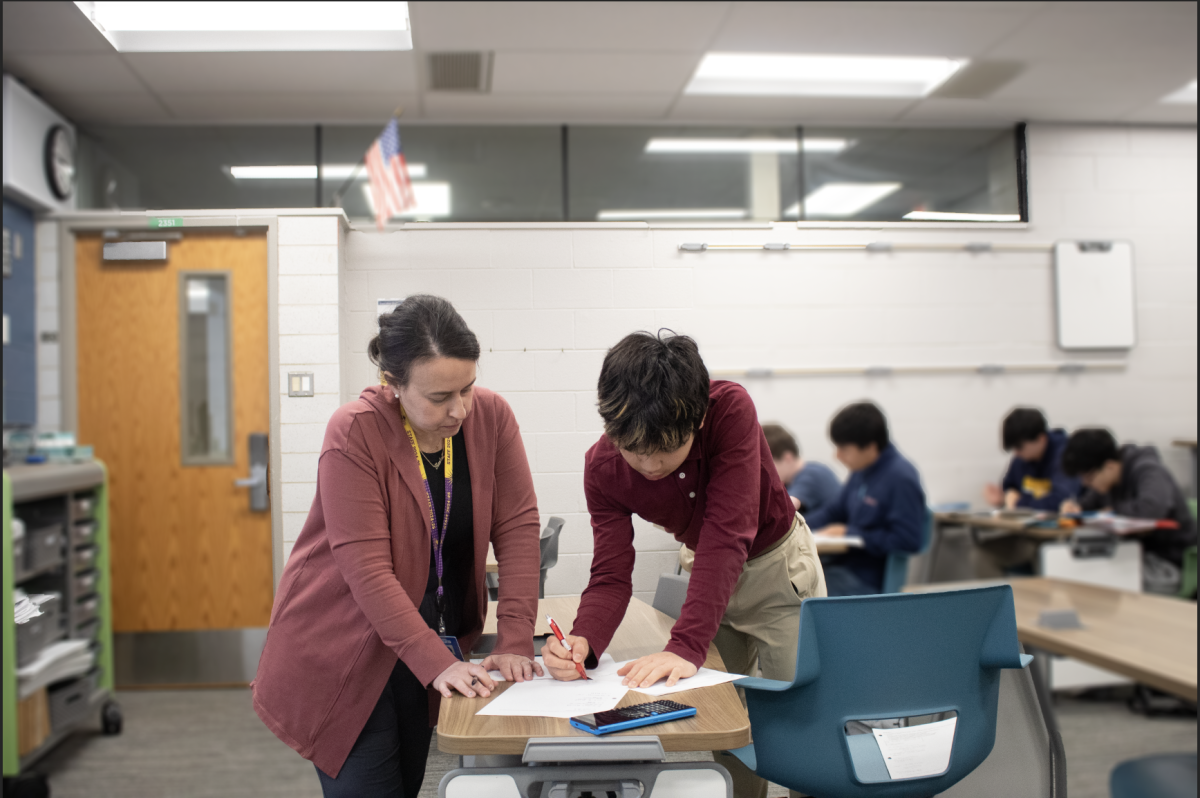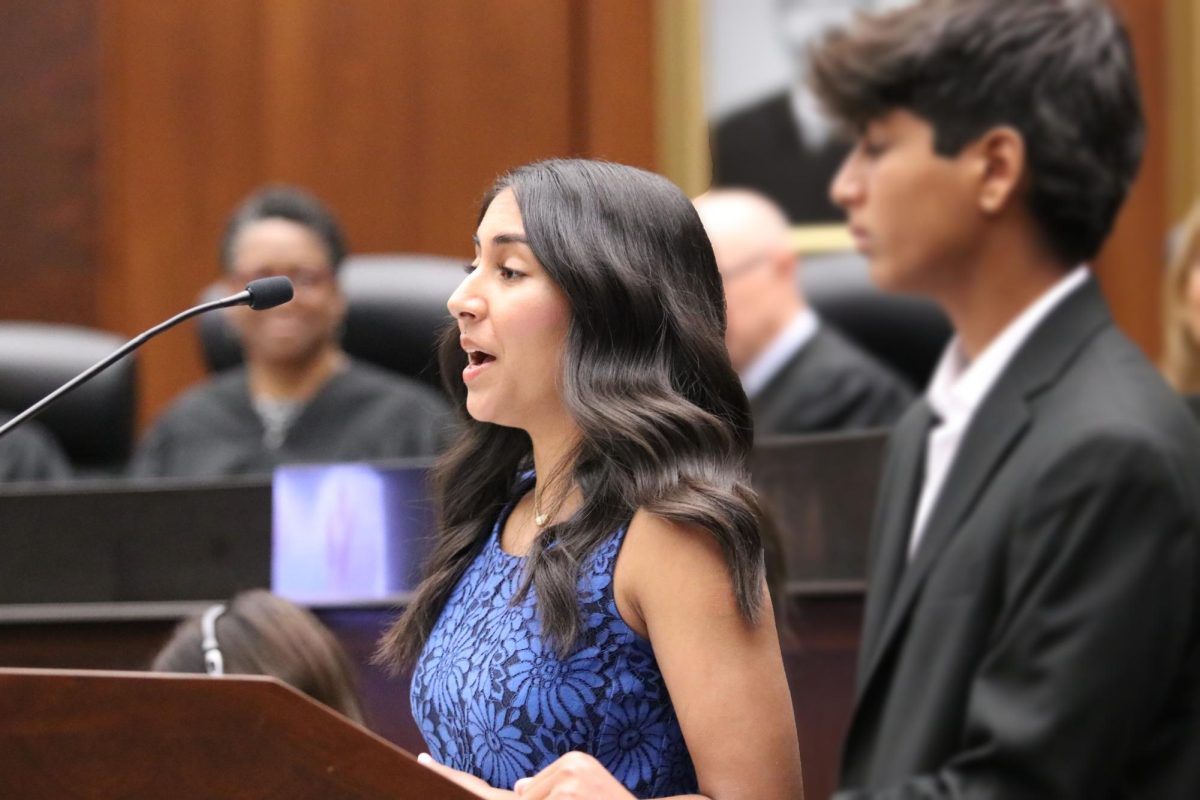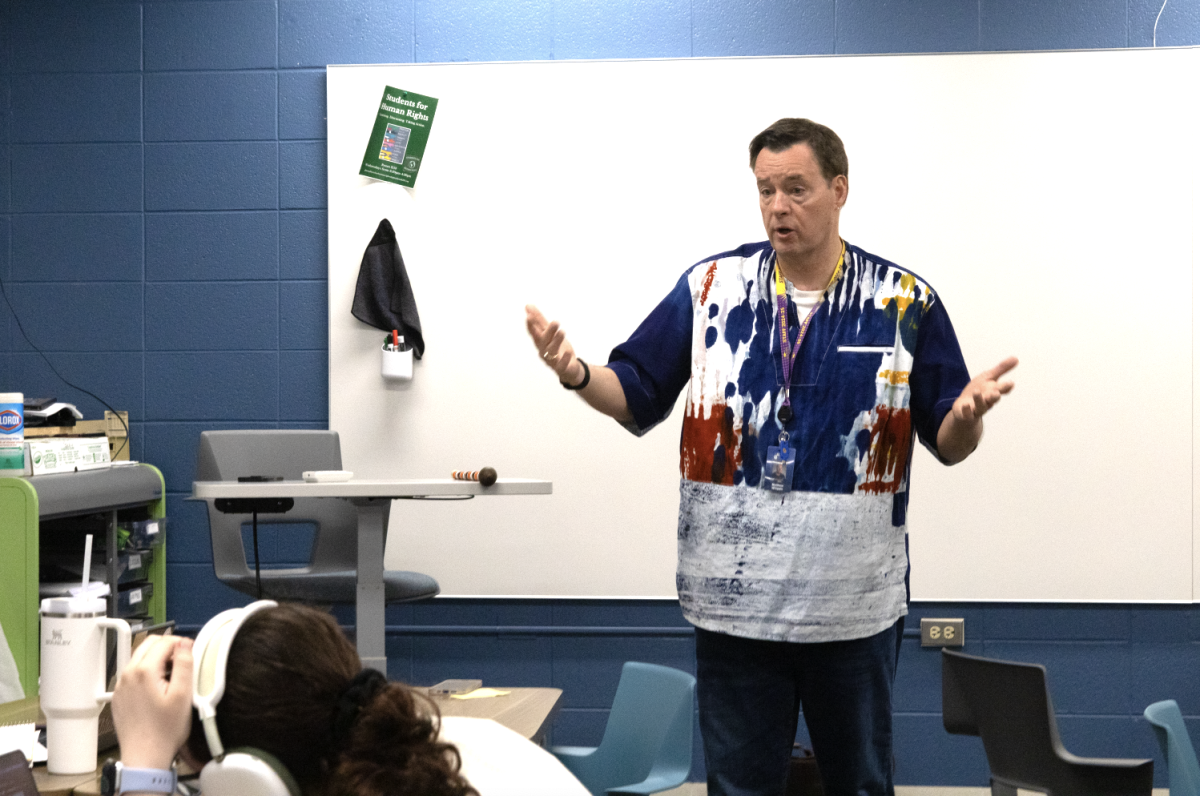For every ten cases of cardiac arrest that occur outside of a hospital, only about one will survive, the American Heart Association (AHA), said. A way to increase the chances of survival is bystander Cardiopulmonary Resuscitation (CPR), Tony Catsaros, Head Athletic Trainer, said. Even though it was mandatory for his role, learning CPR is important for everybody, as it can increase survival, he said.
Students practice CPR as part of their cardiovascular, Automated External Defibrillator (AED), and First Aid unit in South’s Health course, Kelley Oziminski, Health and P.E. Teacher, said. In addition to CPR, students learn how to identify risk factors and signs of cardiovascular disease, she added. Teaching CPR readies kids for emergencies, Christina Zagorski, P.E. and Health Teacher, said.
“My favorite part about this unit is empowering students because, [with this knowledge], no matter their age, sometimes they might be the most qualified person in an emergency situation,” Zagorski said.
It’s important to be educated on heart health and CPR skills because cardiac arrest kills 463,000 people in the U.S. every year, according to AHA, and 1 person dies every 33 seconds from heart disease, a 2024 study by the Centers for Disease Control and Prevention (CDC) said. Preparing oneself for emergency situations by learning life–saving skills like CPR can help students step in during times of crisis, junior Tyler Brown said.
“[Learning how to use an AED and perform CPR] definitely makes you feel a lot more powerful because instead of a doctor [or] first responder, it becomes your responsibility to perform CPR and use the AED,” Brown said.
For junior Lanayah Brandt Townsend, it was initially difficult to master the chest compression motions on the mannequin in Health Class, but once she did, she felt accomplished, Brandt Townsend said.
“[When I got the compression motion right] I felt good because even though it was a dummy, I saved the life,” Brandt Townsend said.
Outside of the Health classroom, there are many other avenues in which students are exposed to these life-saving tools and strategies. One of the most common ways is through jobs as a lifeguard, where training with CPR and AED machines is often intense, sophomore Mira Larkin, who works as a lifeguard, said.
At the Glenview Tennis Club, safety is ensured by counselors getting CPR certified, junior Timmy Crowe, camp counselor and tennis instructor, said. Crowe, working with kids of all ages, attended the Park Center to earn his certification, he said. At the Park Center, Crowe was educated on the use of AEDs, CPR skills, and mouth-to-mouth resuscitation.
“I spend a lot of time with kids and it makes me feel better that if the situation arises where I would need to perform CPR, that I’m confident enough to do that,” Crowe said.
Heart health is not only about being ready to perform CPR in an emergency. In the U.S., 48 percent of adults have cardiovascular disease, a 2016 CDC study reported. One of the most important aspects of heart health is actively participating in preventative measures especially in adolescent years, Catsaros said.
“Having a regular checkup, seeing your physician, [and knowing your] family history, especially if someone has a history of heart health issues, cholesterol, or various heart rates [are all important in preventing health disease],” Catsaros said.
Additionally, avoiding heavy emotional stressors and unhealthy behaviors both play a large part in preventing heart conditions in adulthood, Oziminski said.
“Cardiovascular disease is the number one killer of men and women in the United States,” Oziminski said. “Learning about how to identify risk factors and learning preventative measures like eating a well-balanced diet, making sure you exercise, [and getting] adequate amounts of sleep [are crucial].
Moreover, tuning into how one is feeling physically is important, Catsaros said.
“[To be heart-healthy, you should be] listening to your body,” Catsaros said. “If things don’t seem right, always check in with your health care provider.”








